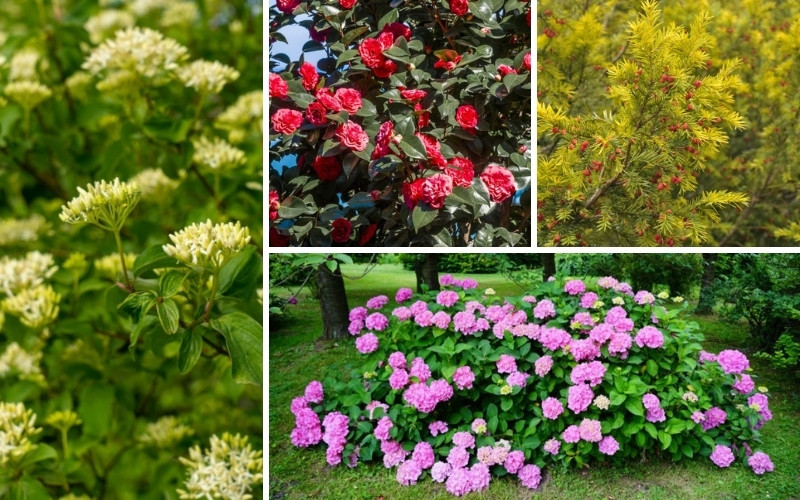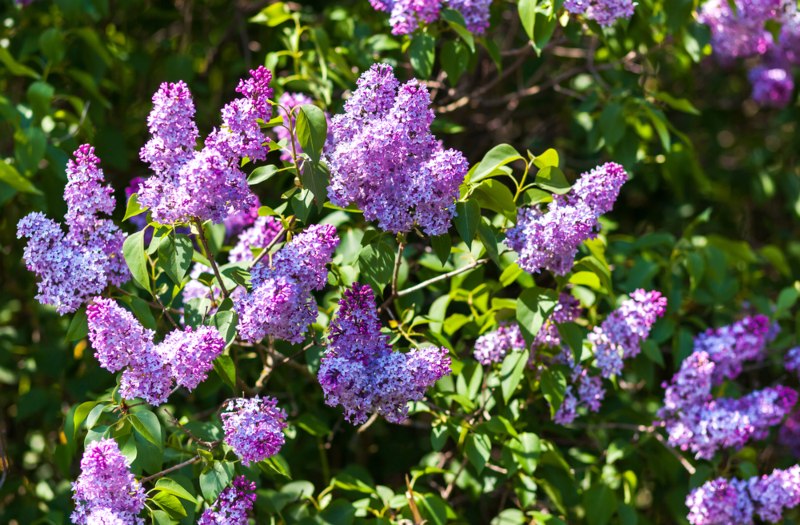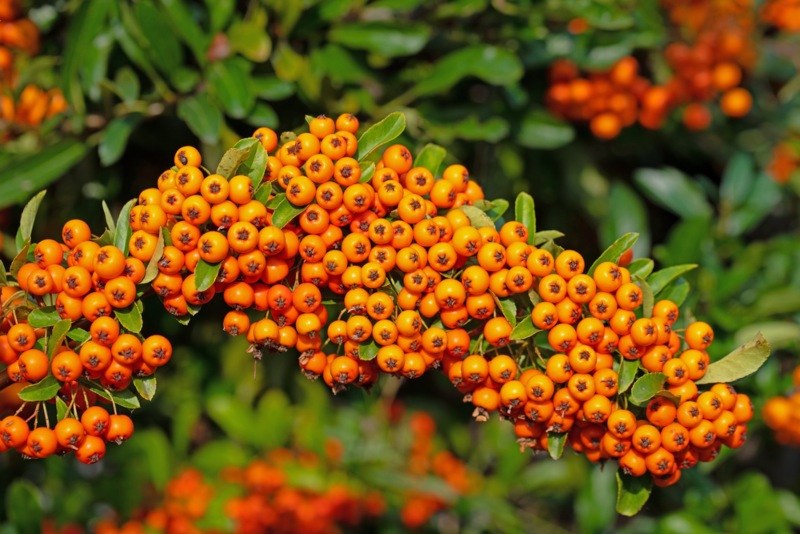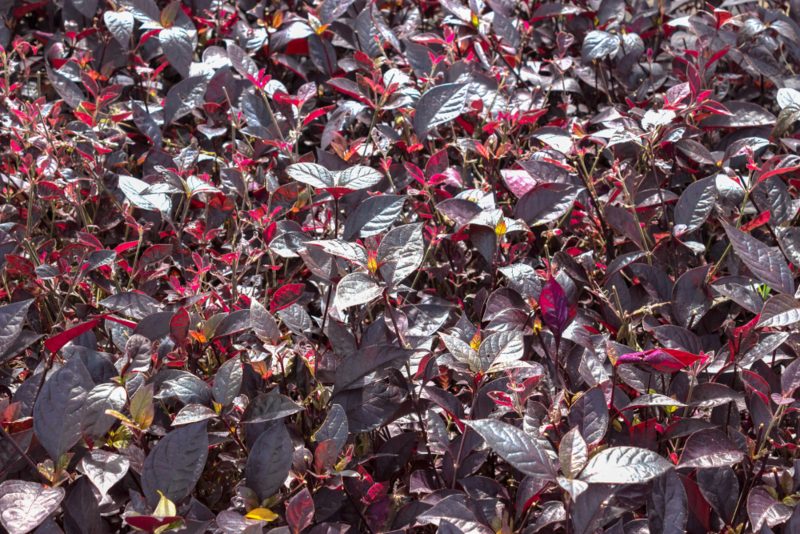
Living privacy fences are a great way to create a border around your home that is both aesthetically pleasing and good for the environment.
In addition to being relatively inexpensive to implement, planting shrubs on your property line can attract pollinators, reduce noise pollution, and provide your yard with ample shade.
Here is a list 12 Best Shrubs for Borders
Boxwood (Buxus sempervirens)

The boxwood shrub is a woody plant with dense, evergreen leaves that make it perfect for privacy. It is widely cultivated and used in landscaping of all kinds, including as topiaries. This shrub does well in full sun, but will also survive in light shade.
Common boxwood shrubs can grow up to 20 feet tall. Different variations can withstand different temperatures, however, the English boxwood is grown best in USDA 7.
English Yew (Taxus baccata)

This lovely evergreen shrub can reach heights of 100 feet and is wide-spreading. It features long, flat, dark green leaves, and produces gorgeous bright-red berries.
English yew prefer moist, well-drained soil and full sun, although it will tolerate full shade. It isn’t necessary to prune this shrub, although doing so will not harm it.
Privet Hedges (Ligustrum)

Privet hedges are an excellent border option thanks to their aesthetic appeal and how quickly they grow. This type of hedge has dense foliage and sports beautifully scented white flowers during the summertime, which turn to purple-black berries in the fall.
It can grow up to 15 feet tall and eight feet wide. It isn’t picky about the type of soil it grows in, although it does prefer full-sun and the warmer climates found in USDA Zones 6 to 9. Once fully grown, privet hedges are drought tolerant.
Lilac Bush (Syringa vulgaris)

With their frothy cream and violet blooms and sweet, signature scent, lilac bushes are a beautiful way to create a plant border around your home. They have dense and glossy green foliage that looks lovely even when the blooming season is over.
Lilacs grow best in USDA zones 3 through 7 and prefer at least six hours of sun a day. They grow best in moist, alkaline soil with a 6.5 to 7 pH and require excellent drainage.
Hydrangea Bush

Hydrangea bushes are large perennial shrubs that produce showy spherical blooms in spring and summer. The color of their blooms depends on the type of soil they are grown in, which can result in pinks, purples, blues, and creamy white flowers. Depending on the type of Hydrangea, this plant can grow up to 15 feet tall.
They grow in a wide range of climates and can commonly be found in zones 3 to 7. Some types withstand colder temperatures better than others, but they are generally full-sun plants. Well-draining soil is necessary to avoid root rot and do well with a base layer of mulch.
Blackhaw (Viburnum prunifolium)

Blackhaw shrubs are deciduous plants with a reddish-brown trunk and long, glossy green leaves that turn a lovely shade of purple in the fall. In the spring, this shrub produces tiny white flowers.
Blackhaw can grow up to 15 feet tall, making it an excellent border plant. It is relatively low-maintenance, although it does require full sun and moist, well-drained soil to thrive. You can grow Blackhaw in USDA hardiness zones 3 through 9.
Pyracantha

Also known as a Firethorn, the Pyracantha is a thorny evergreen shrub that is both easy to grow and makes a show-stopping addition to any landscape or border. What makes this shrub so unique is its vibrant and abundant red-orange berries which come from showy white flowers and last through the winter.
There are different types of Pyracantha. However, for borders and privacy fences, consider the Victory Pyracantha or the Mohave Pyracantha. The Victory Pyracantha can grow up to ten feet tall and does best in zones 7 through 9, while the Mohave Pyracantha can reach 12 feet tall and loves full sun and heat.
Purple Daydream Loropetalum

If you’re interested in an evergreen shrub for your border that has colorful foliage, Loropetalum might be the shrub for you. This gorgeous plant produces dark purple foliage and bright pink stringy blooms every spring.
It can be found in USDA Zones 7 through 10 and likes full sun to partial shade. This shrub is on the smaller side, growing up to three feet high and four feet wide.
English Laurel (Prunus laurocerasus)

On the more traditional end of the spectrum, we have the English Laurel. This is a dense, thorny evergreen shrub that works perfectly as a privacy screen or border fence. It has clusters of white flowers in the springtime that smell divine and produce bright red berries that will attract all kinds of birds.
It prefers full sun and warm climates, which is why it grows best in zones 6 to 9. It is drought tolerant, can withstand salt spray, and is often found on the East and West Coast.
Camellia Japonica

Camellia Japonica is another show-stopping shrub that grows up to 13 feet tall and ten feet wide. Native to China, Korea, and Japan, this woody shrub produces gorgeous pink, red, yellow, and white flowers that attract all kinds of pollinators.
You can find this plant in zones 7 through 9. It thrives in acidic soil with good drainage and should only receive two to six hours of direct sunlight a day.
Forsythia (Forsythia viridissima)

For a pop of color on your border, try the shrub Forsythia.
This deciduous shrub has thin, light gray stems and produces brilliant golden-yellow flowers in the springtime. It likes clay or sandy, alkaline soils with good drainage and grows best in zones 5 through 8. It prefers six or more hours of direct sunlight per day but will tolerate partial shade conditions.
Northern Bayberry (Myrica pensylvanica)

Northern Bayberry is a dense shrub native to the United States that does particularly well in coastal environments. It has glossy dark green leaves that have a leathery texture and a fragrant smell. They also produce small silver flowers in the springtime.
This shrub is excellent for borders as it grows up to ten feet tall and ten feet wide. It can grow in partial shade but will do best in full sun. You can grow this shrub in zones 3 through 7.
Conclusion
Using plants around your yard or property border is an excellent alternative to costly and unattractive fencing. From flowering shrubs to deciduous evergreens, there is something for every homeowner to enjoy.













